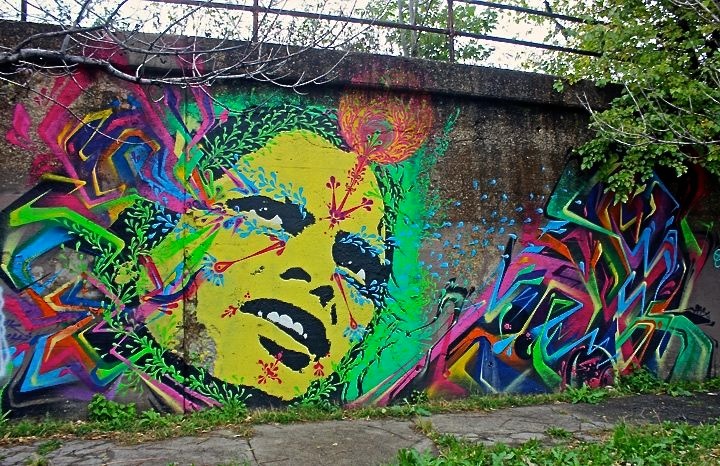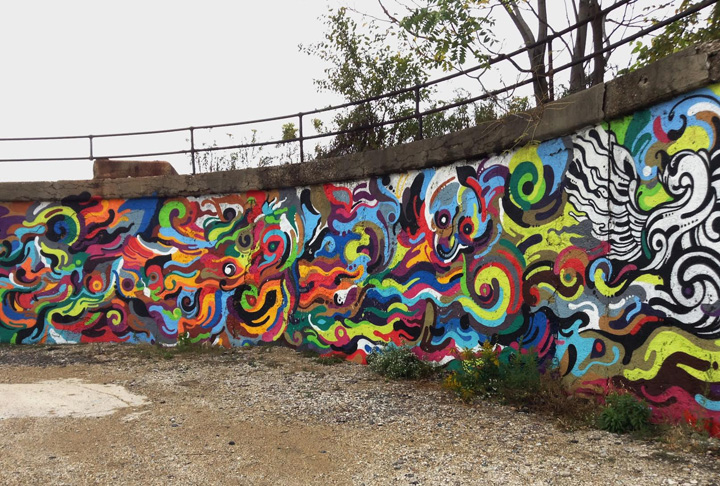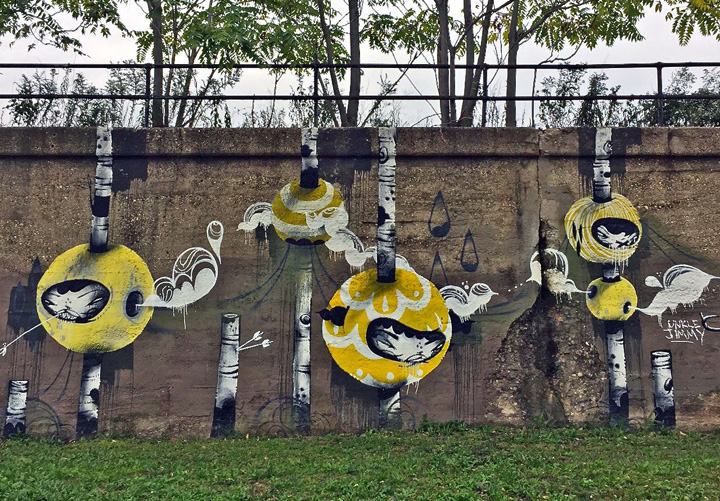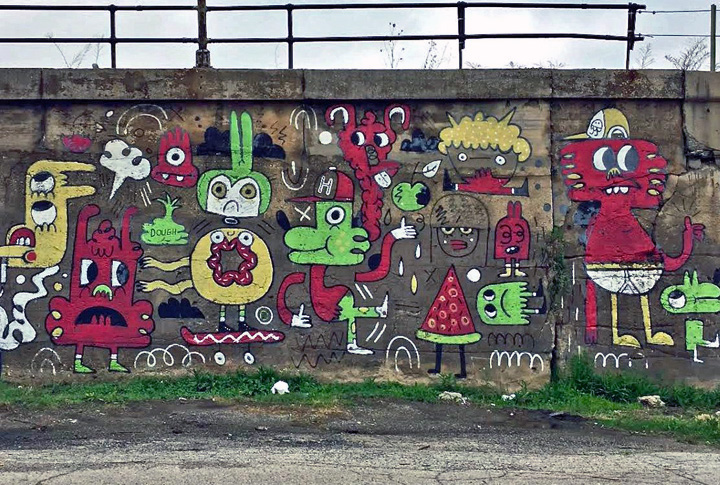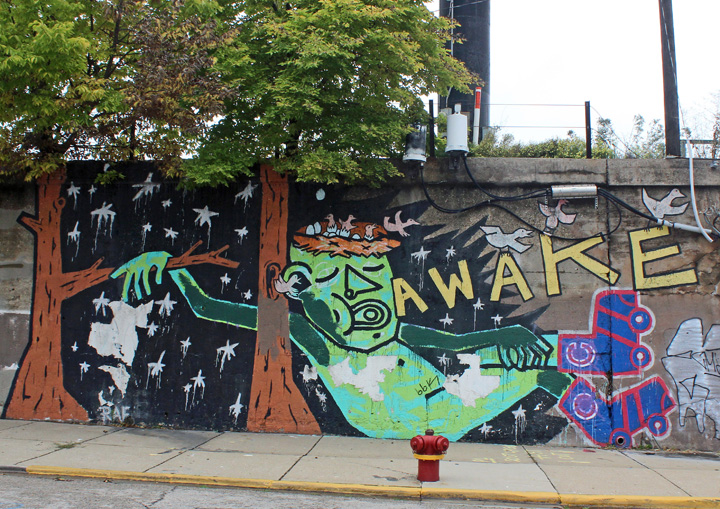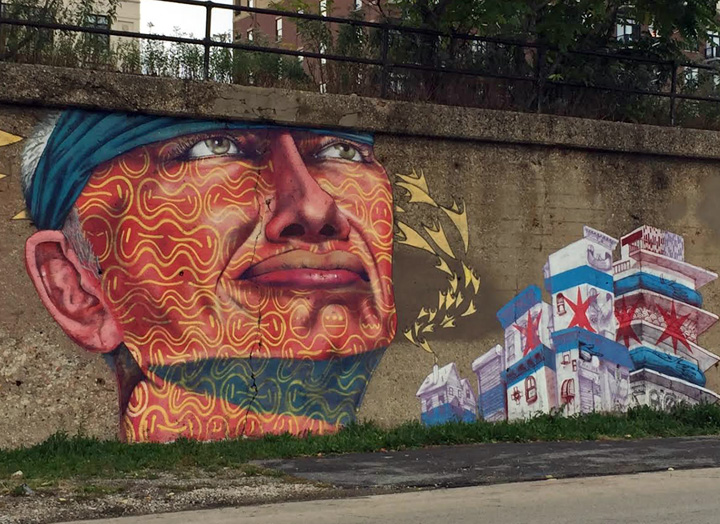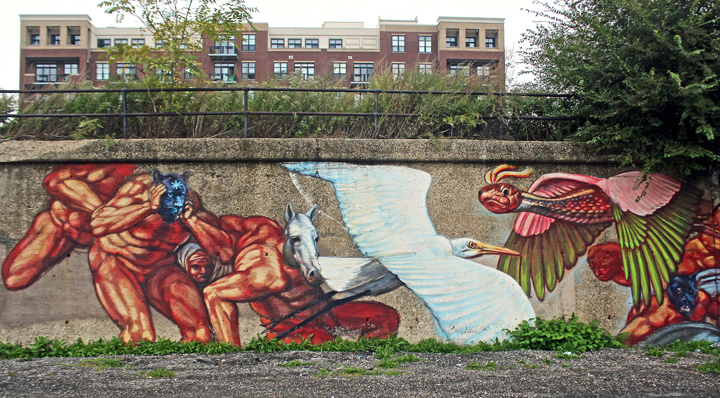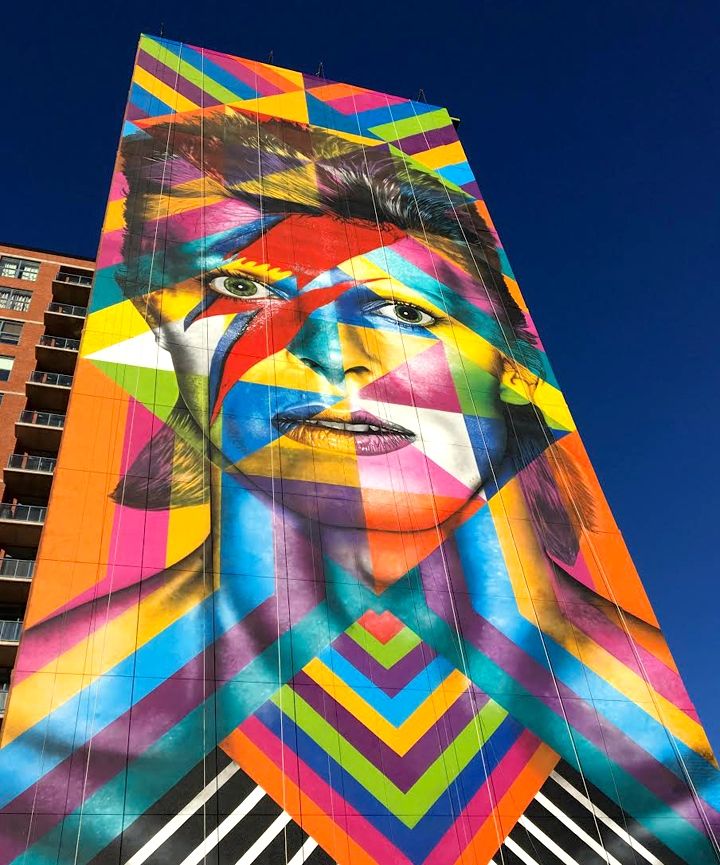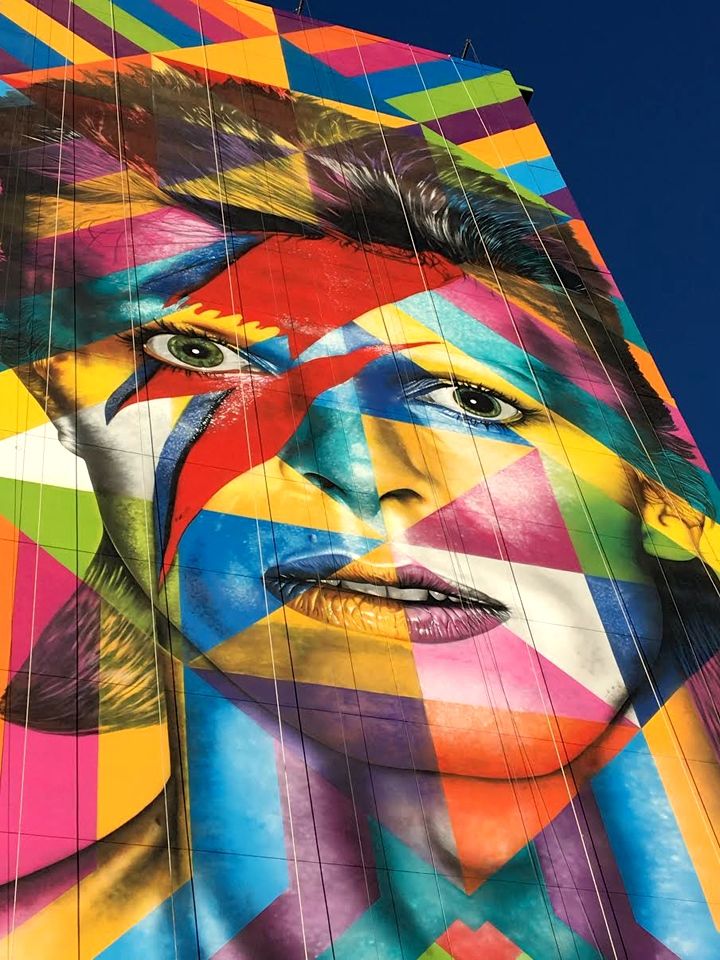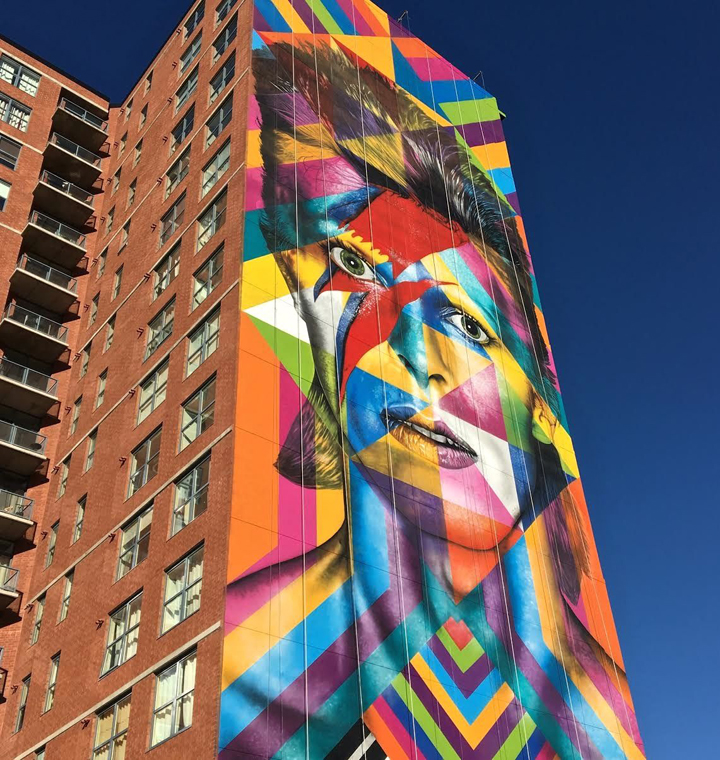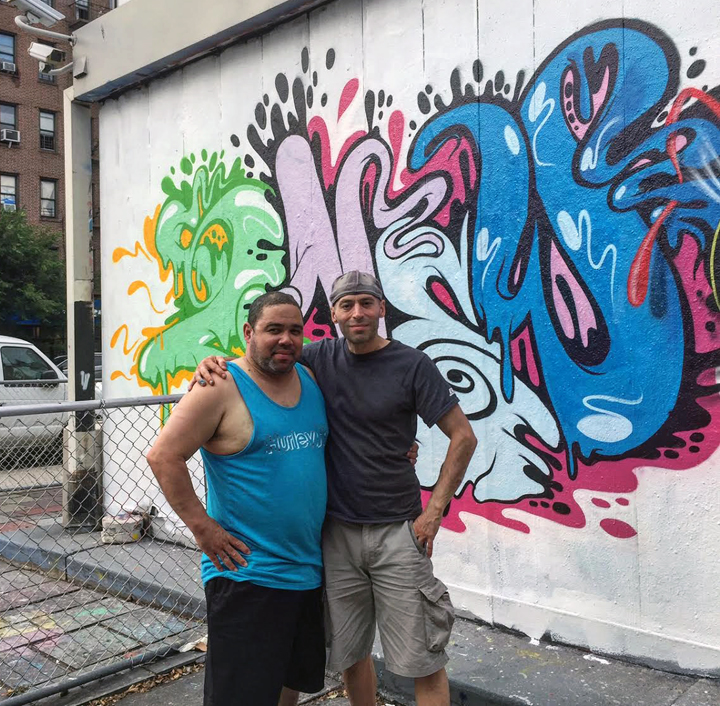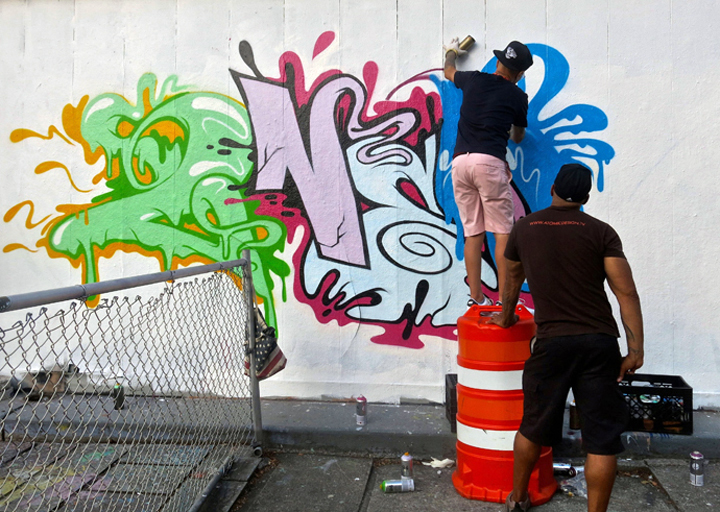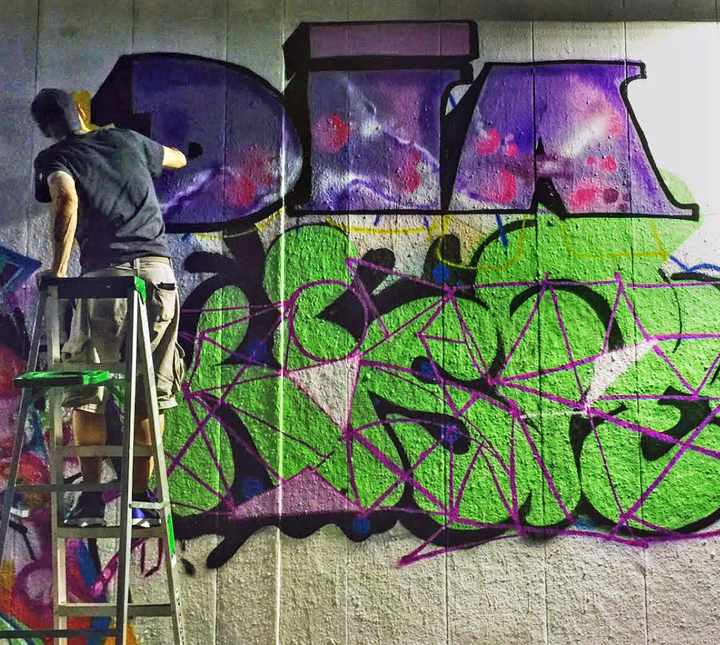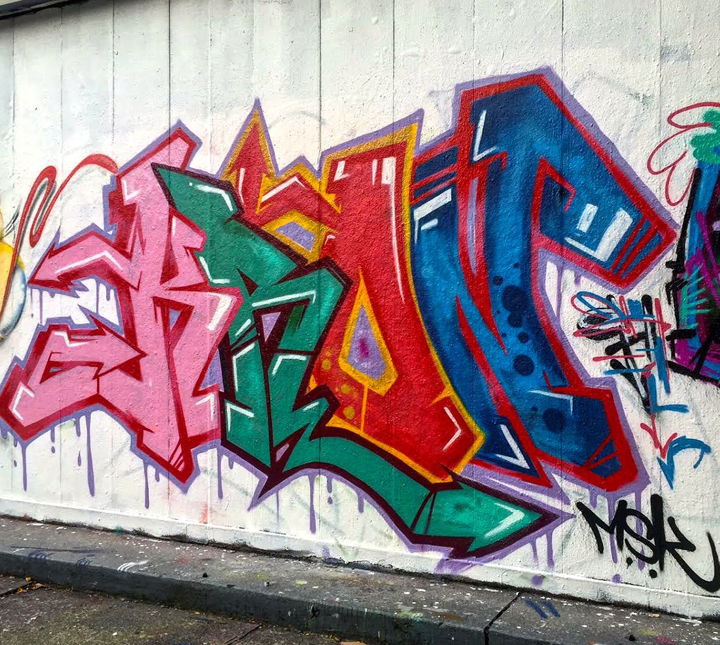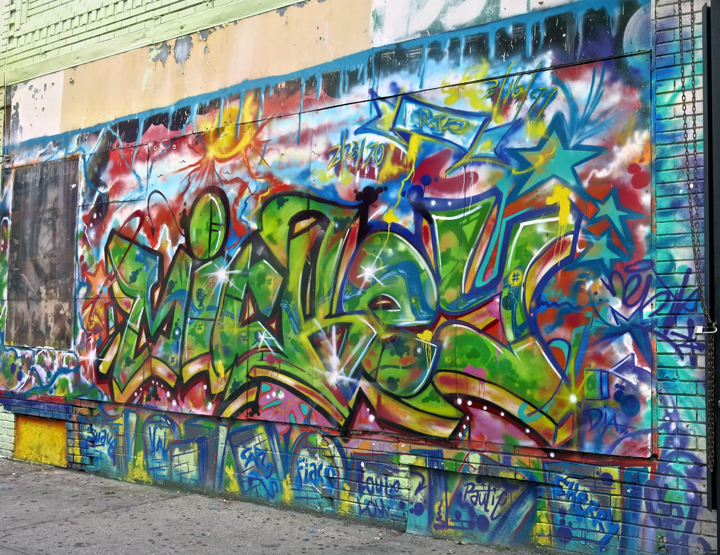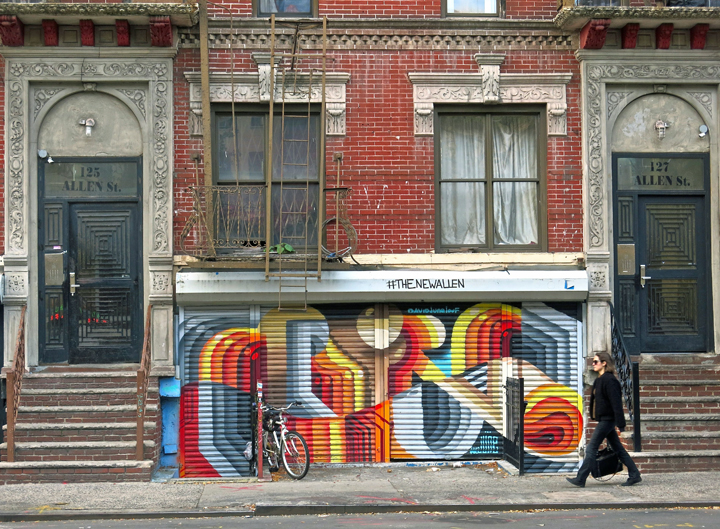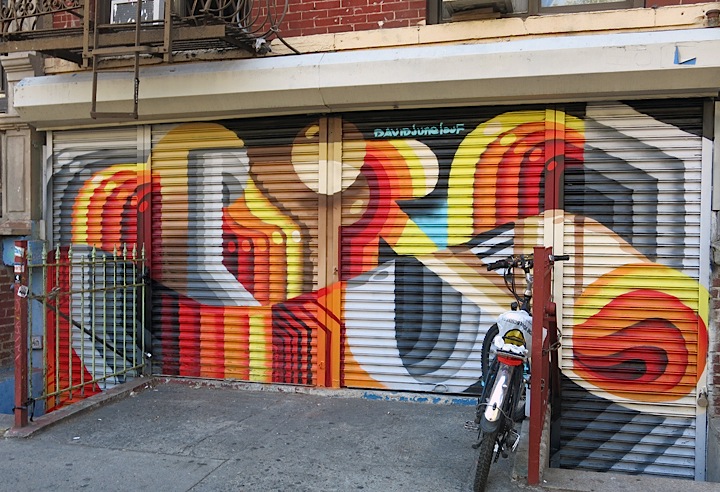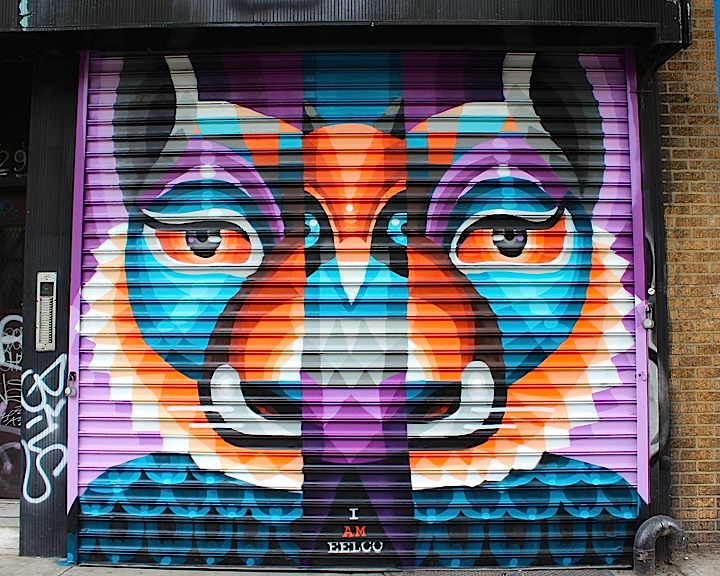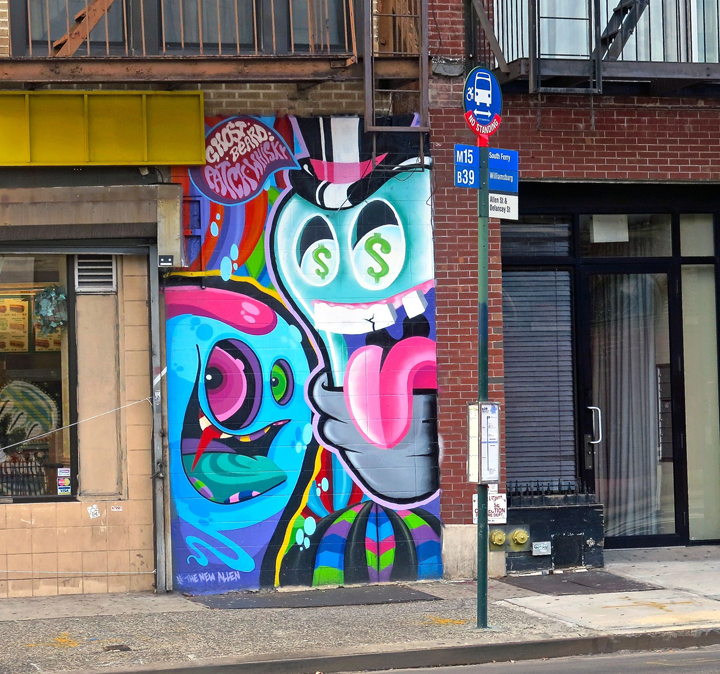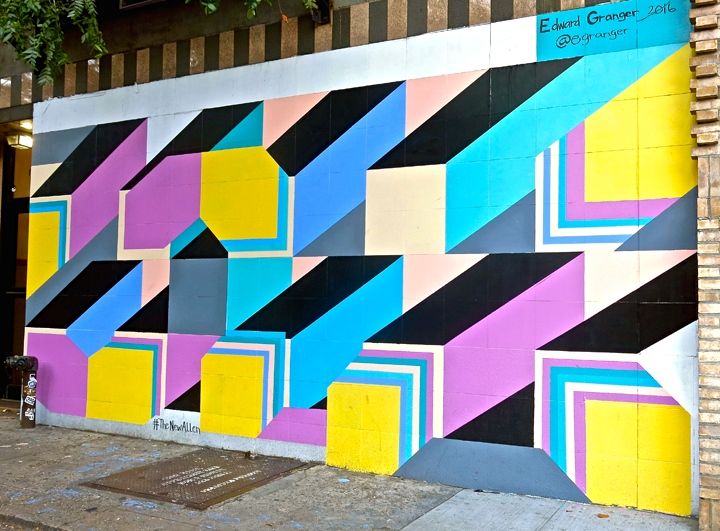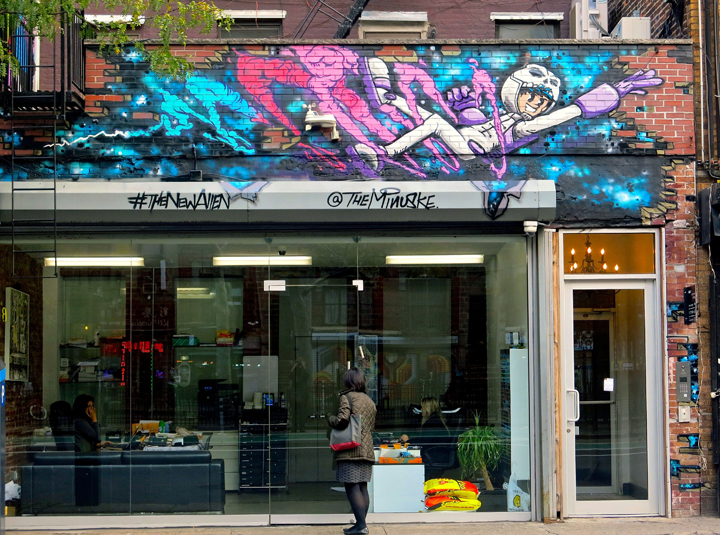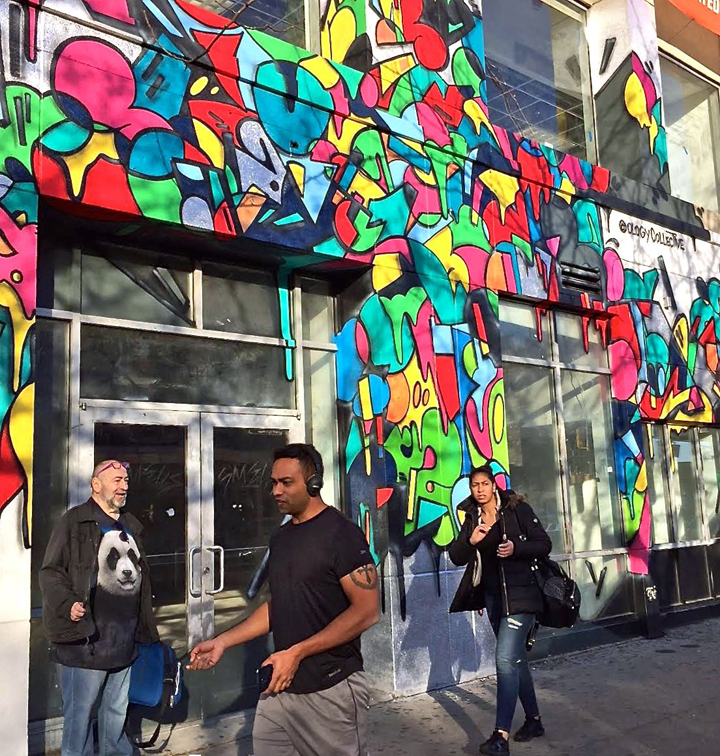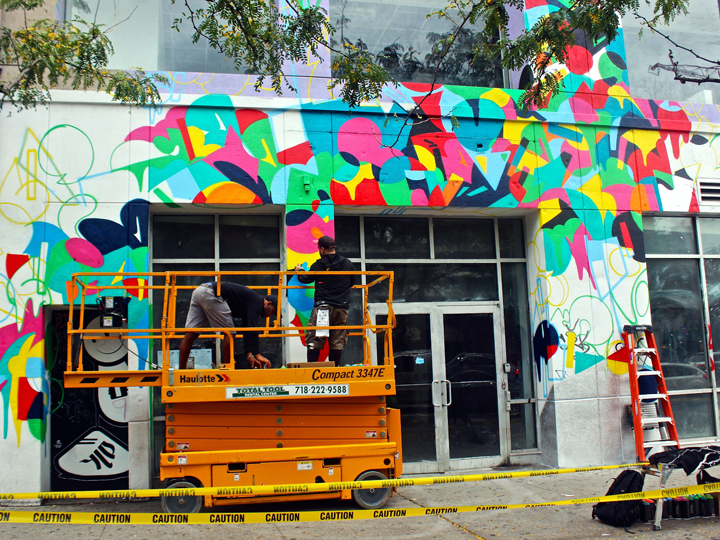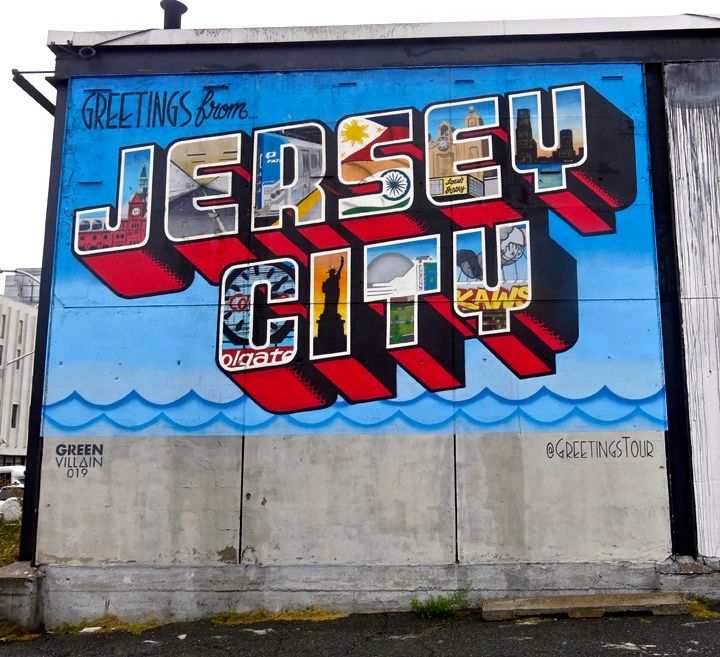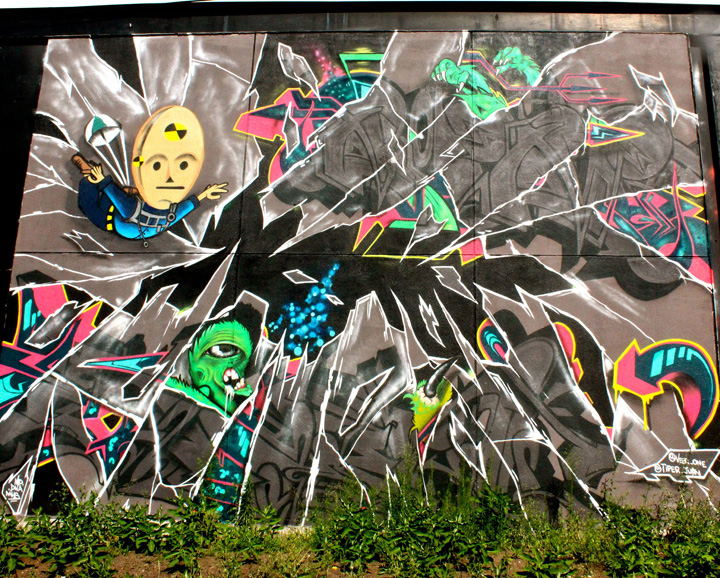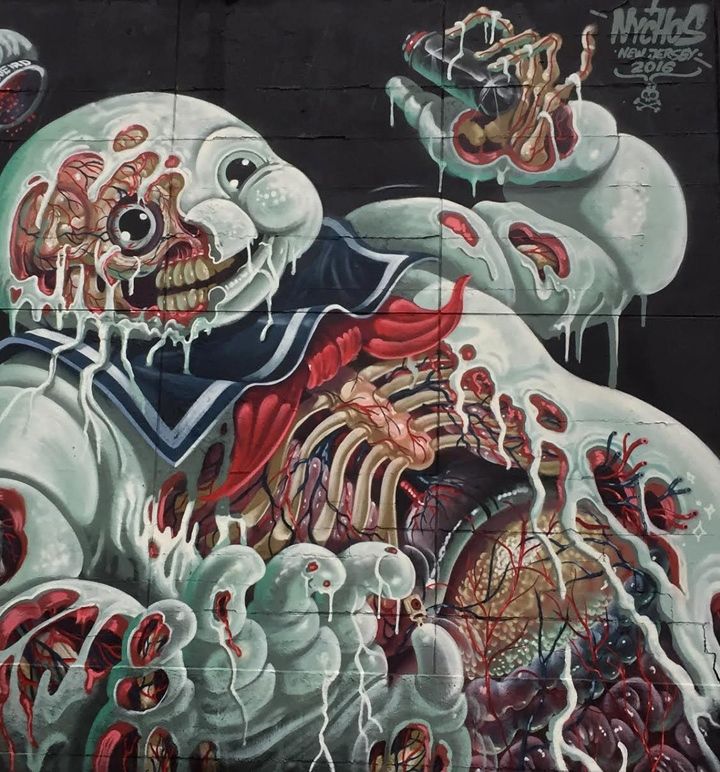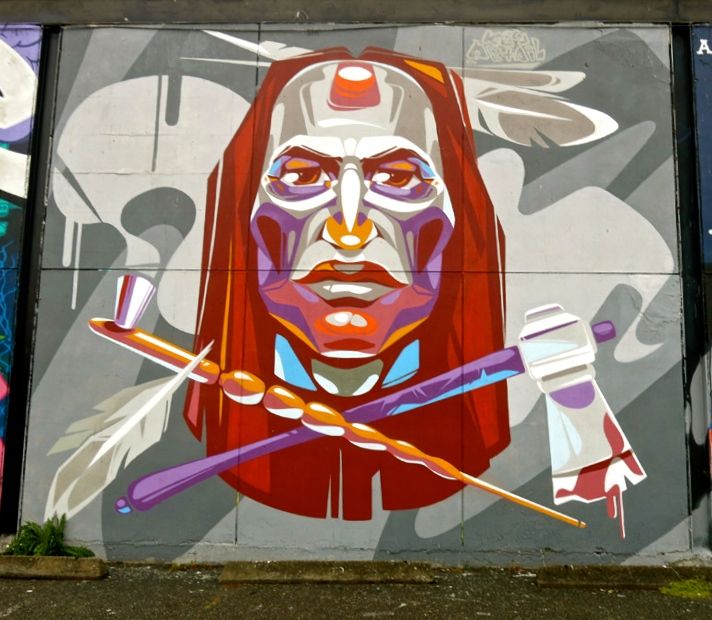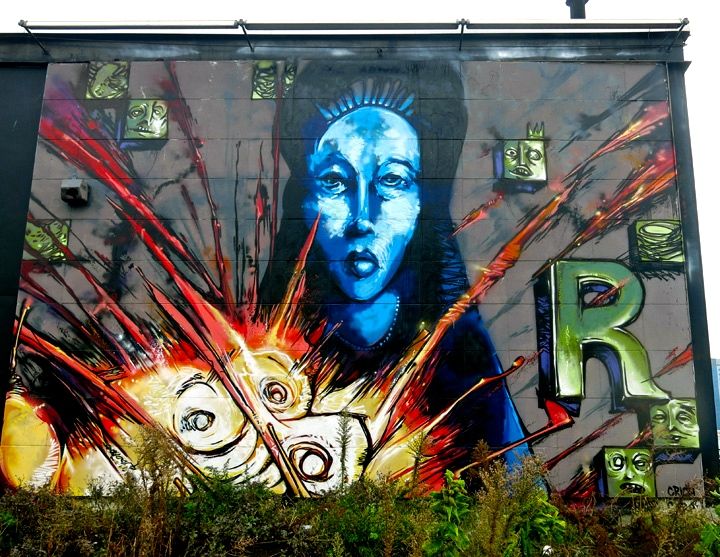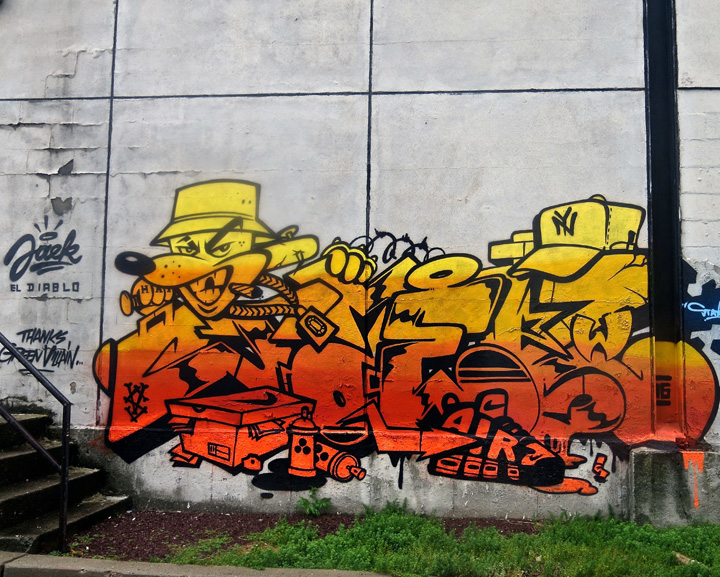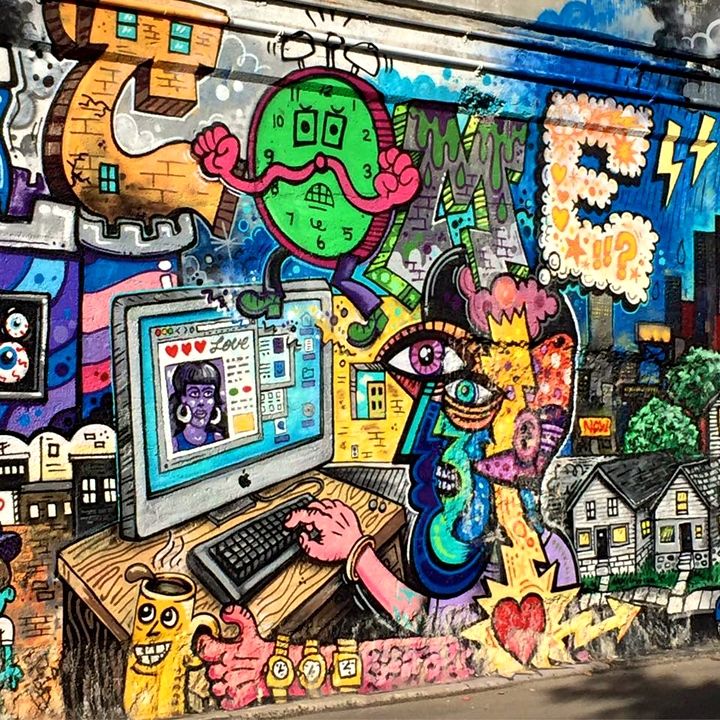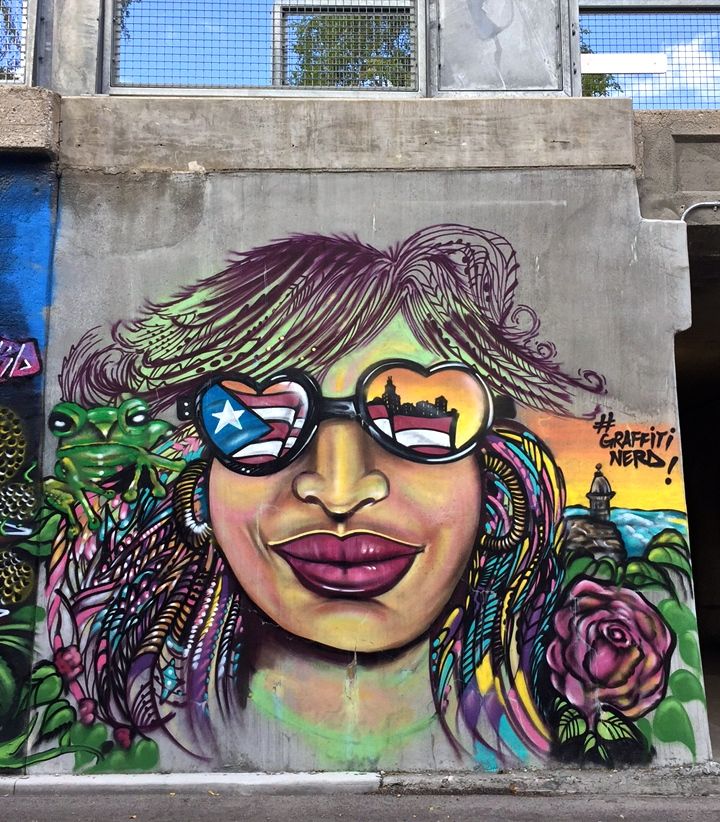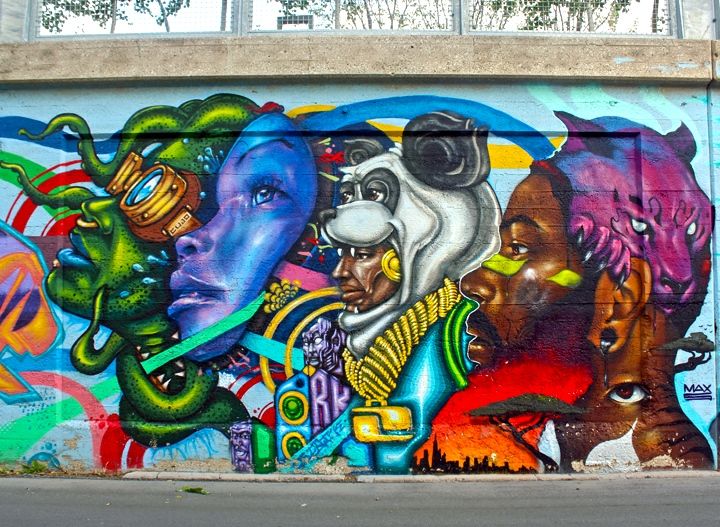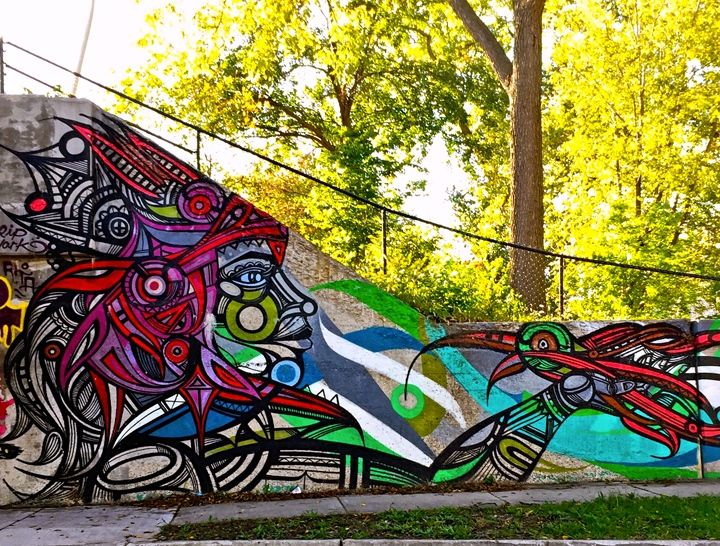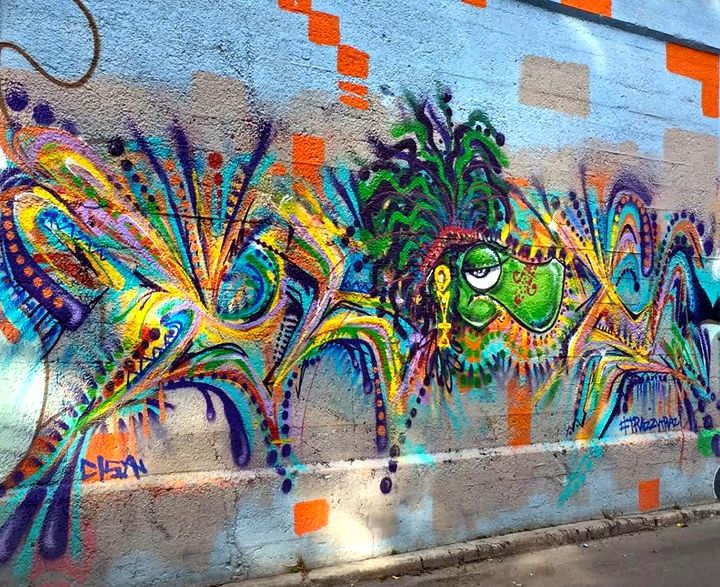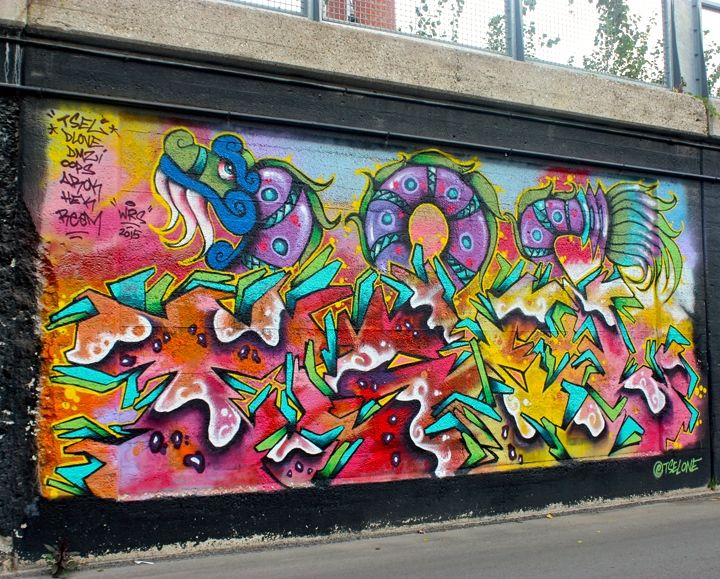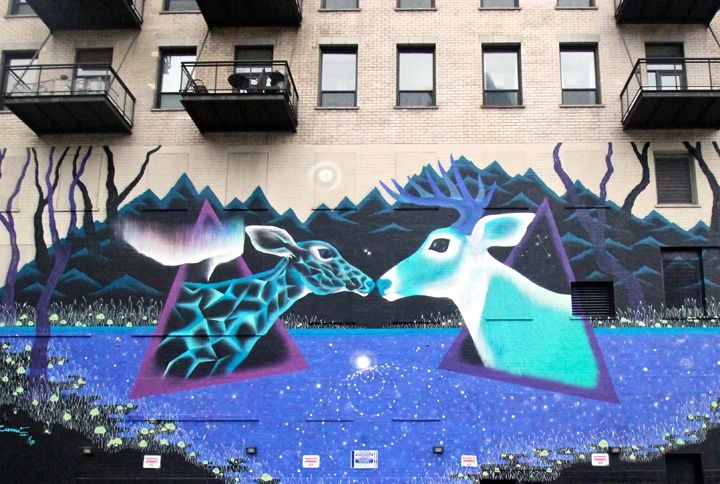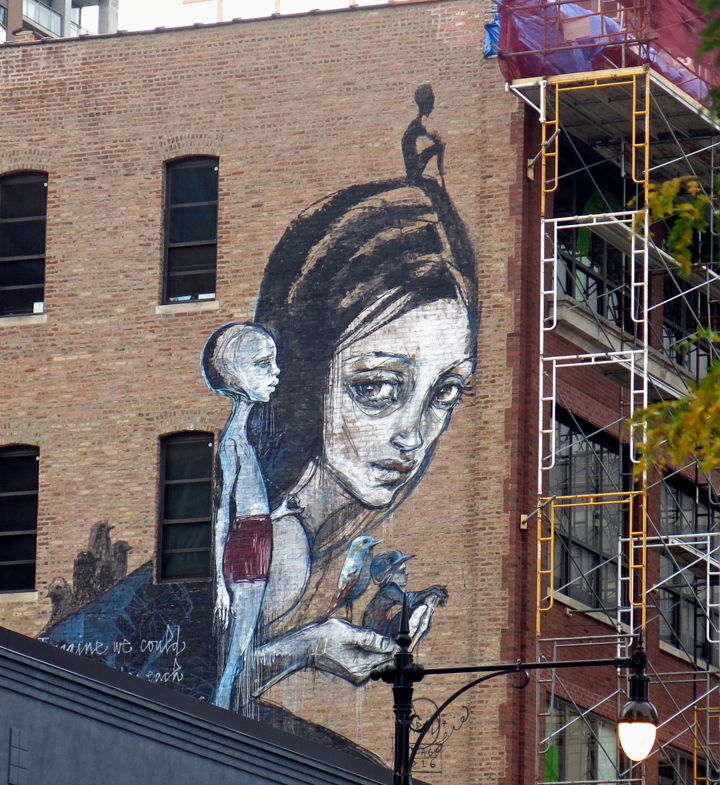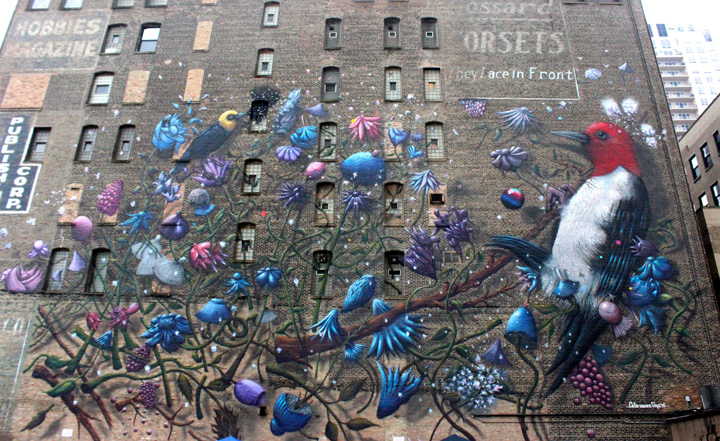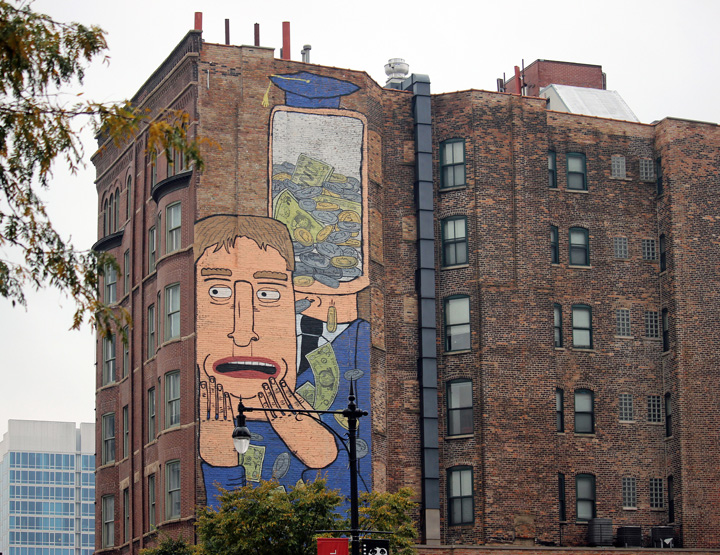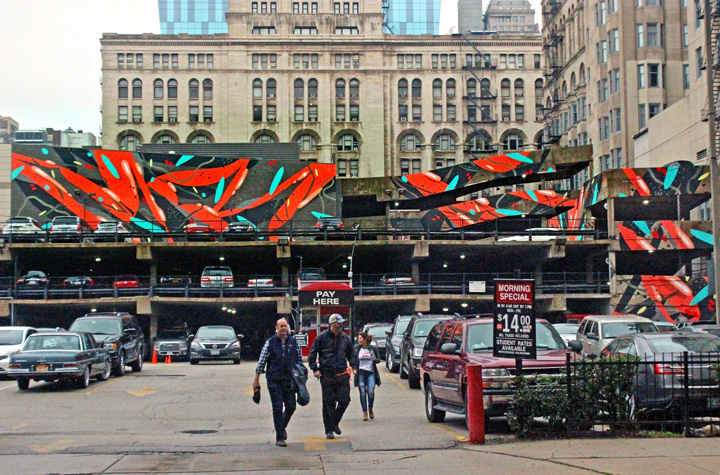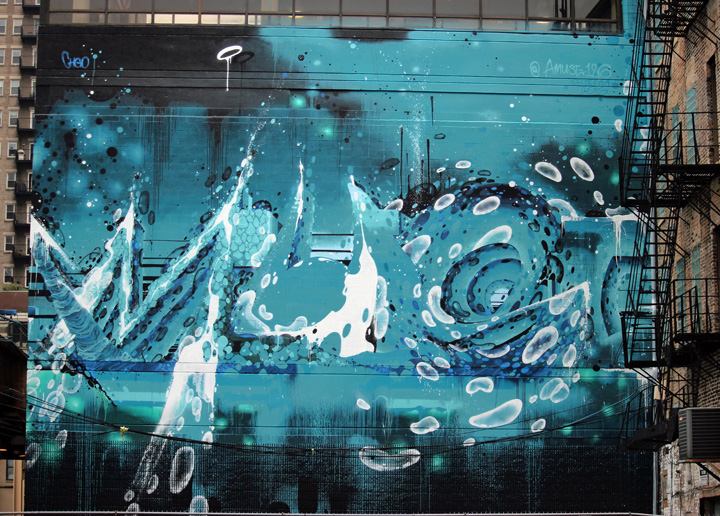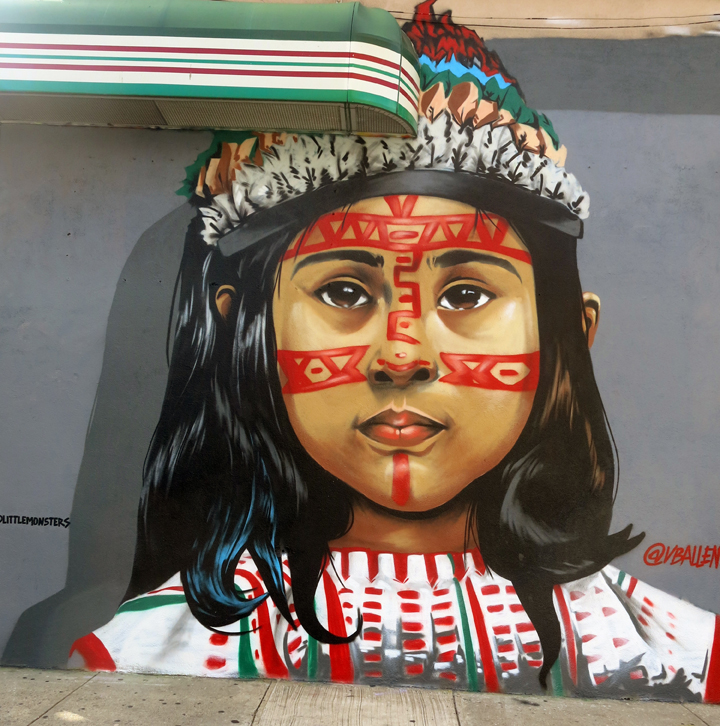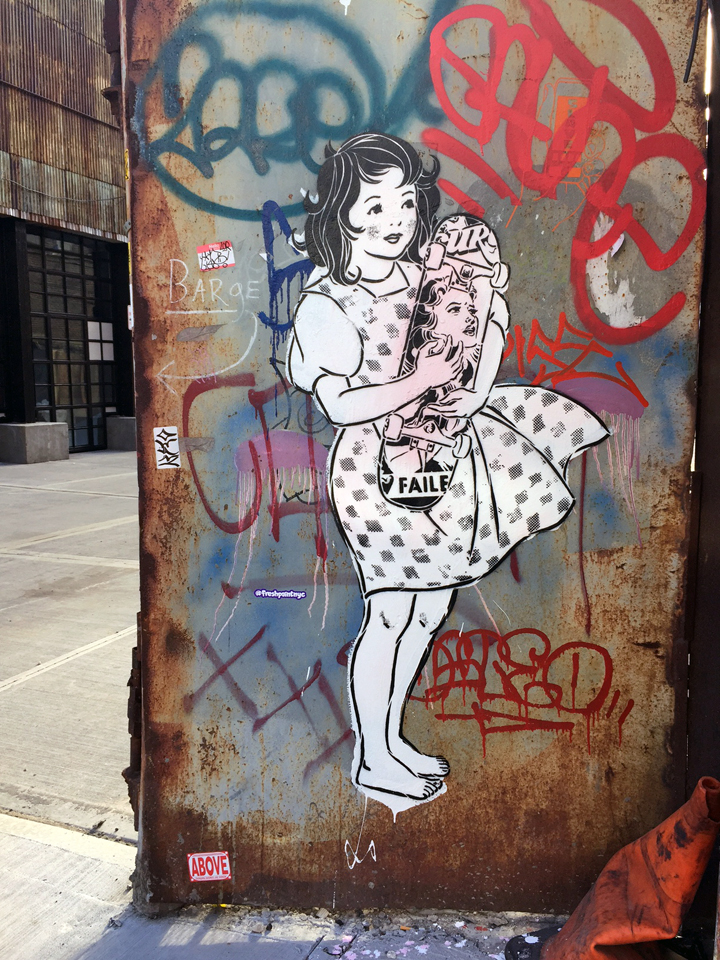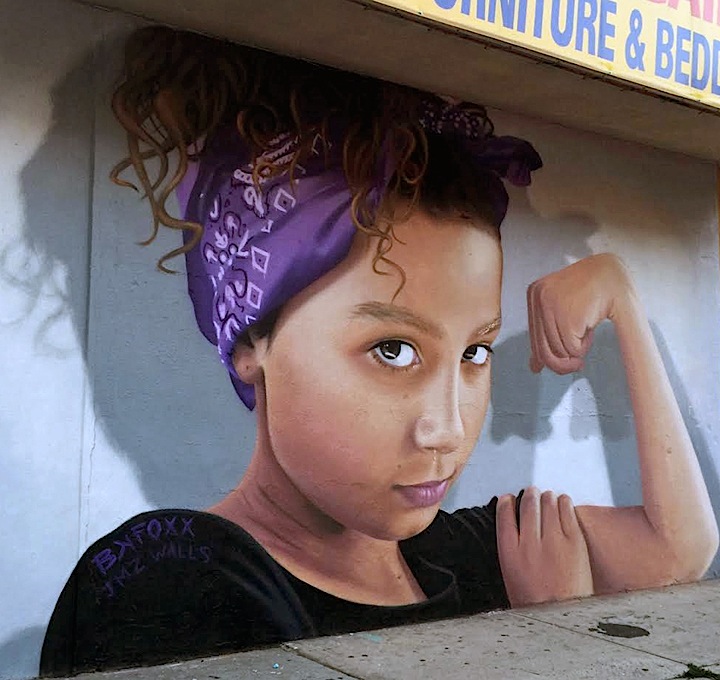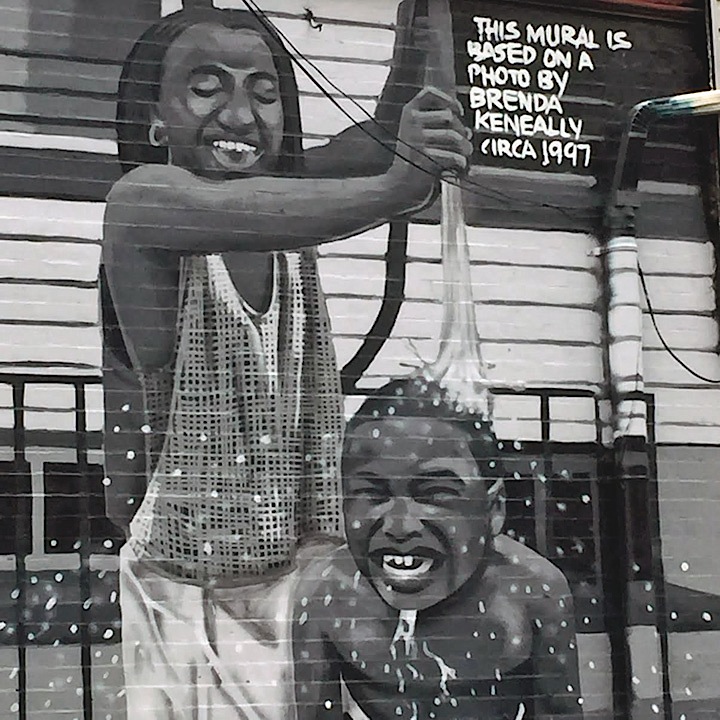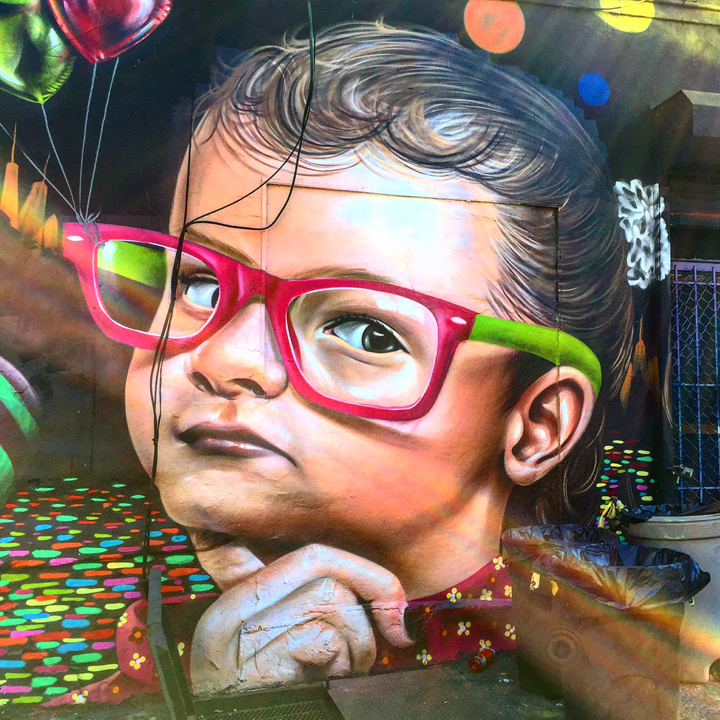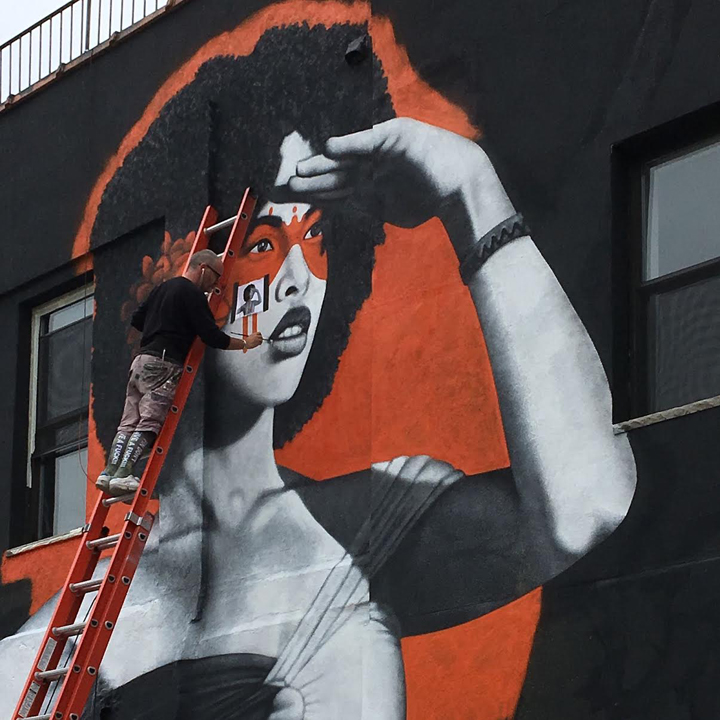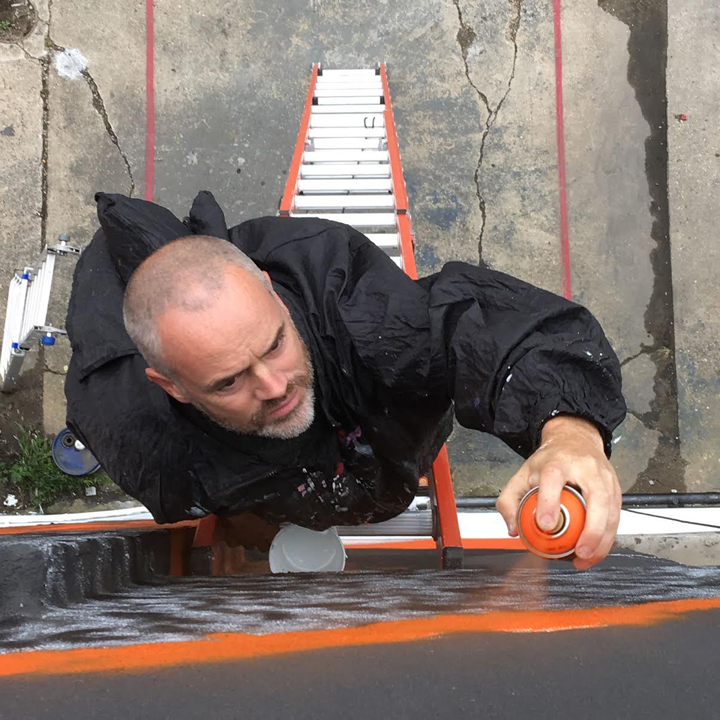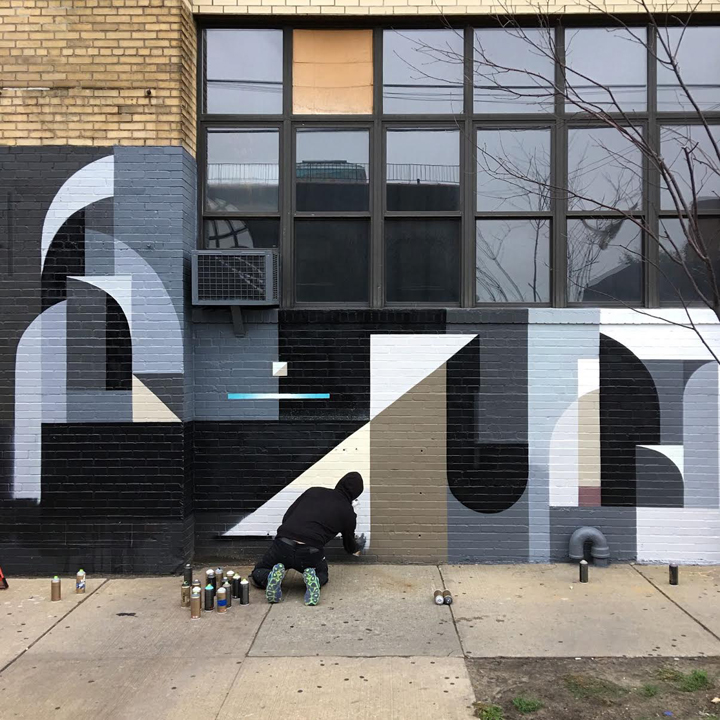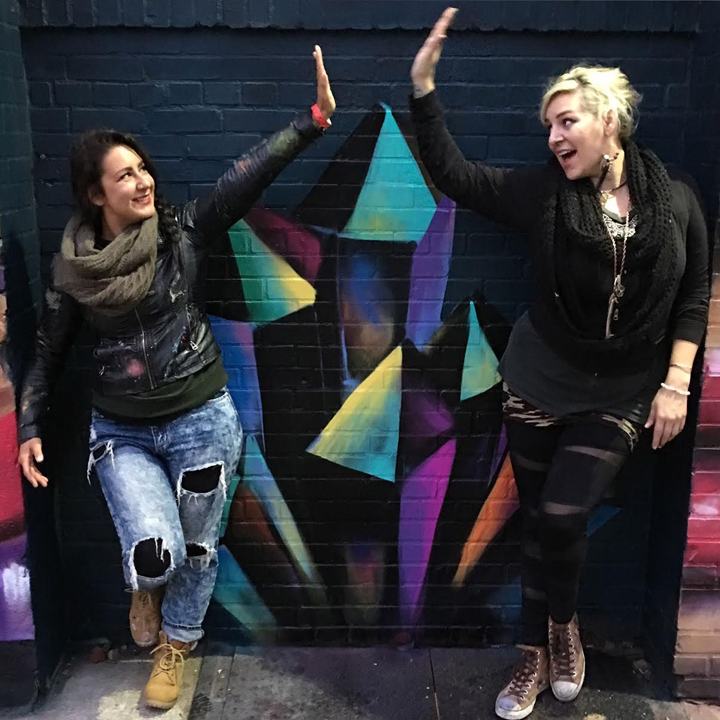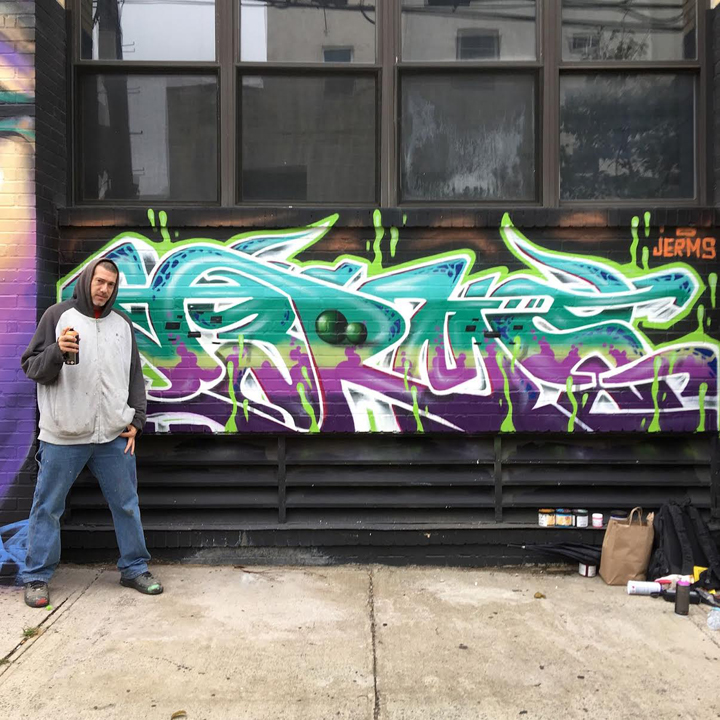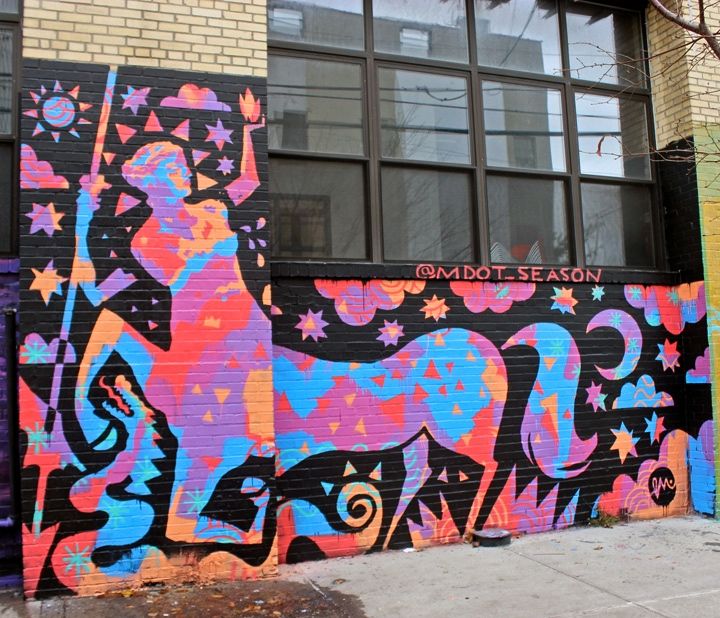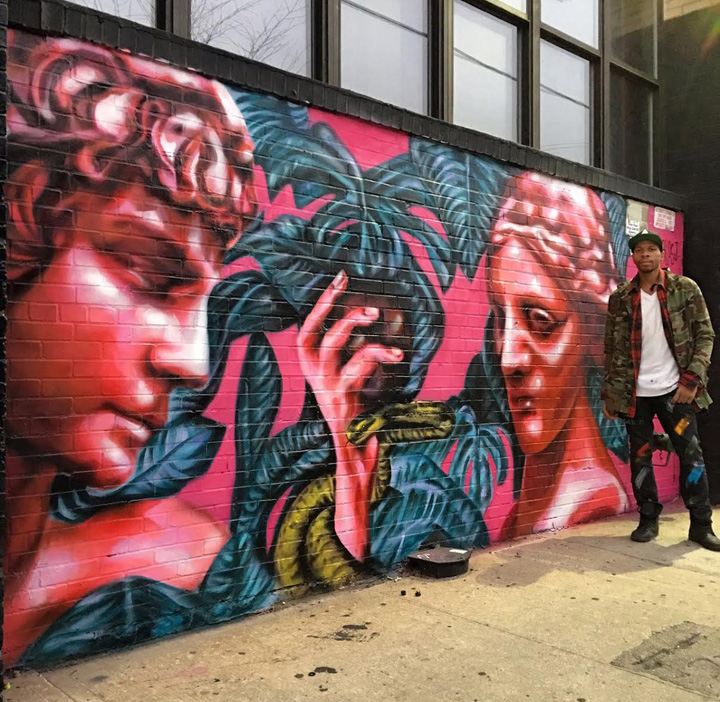Toronto native Waxhead moved to Montreal in 2012, where his singular style has surfaced on a range of surfaces from vintage photographs to huge walls. I discovered his distinct aesthetic this past summer while visiting Station 16 and exploring the streets of Montreal. Waxhead‘s first solo exhibit in Montreal, Waxhead: An Installation opens this Thursday, November 3 at Station 16. While in Montreal, I had the opportunity to visit Waxhead‘s studio and pose some questions to him.
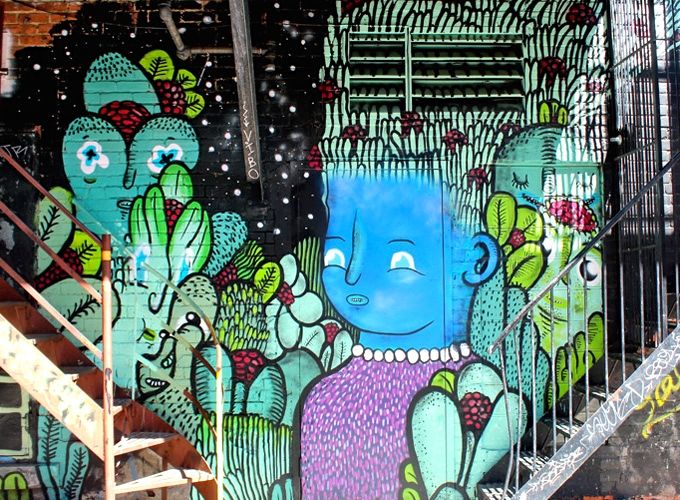
When and where did you first get up?
I was 13 when I began tagging along the trackside in Toronto. It was back in 2006.
Who or what inspired you at the time?
I lived right beside the train tracks. I saw graffiti every day. It seemed like the natural thing to do. I didn’t become serious, though, about it until I was 18. That’s when I really got into characters.
How did your family feel about what you were doing back then?
My mom has always been supportive. ‘gotta love Mom!
Have you any thoughts about the graffiti/street art divide?
I respect the mentality of getting up. But I also appreciate the refined work of street art. I’ve done both.
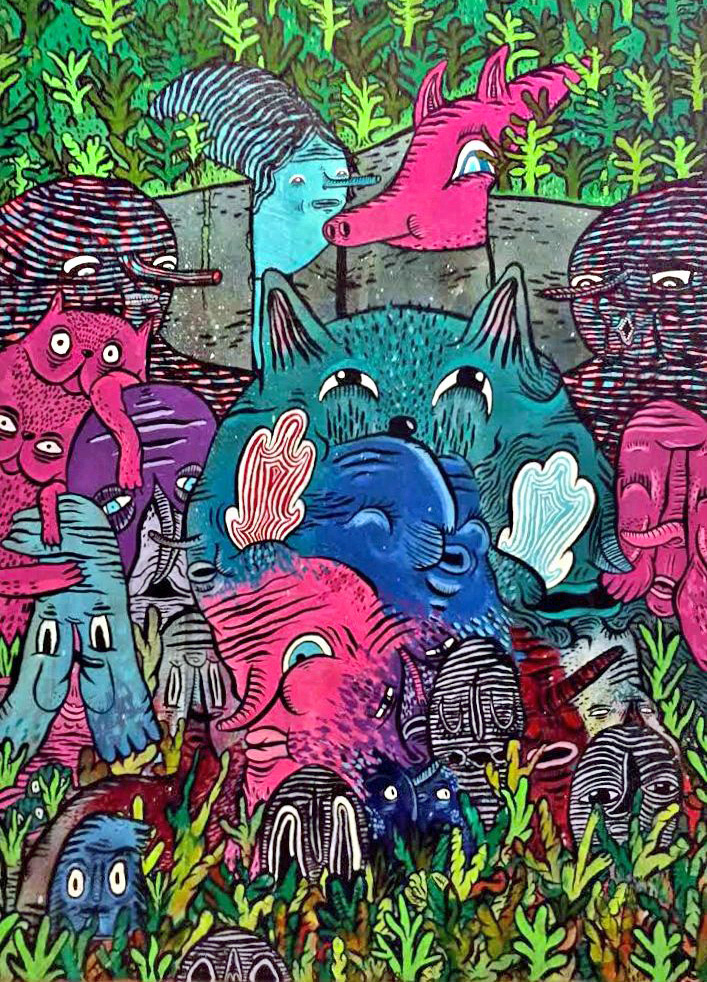
How do you feel about collaborating with other artists?
I love to collaborate. Among the artists I’ve painted with are: Cry0te, Sbuone and Getso.
What about the movement of street art into galleries?
It’s great when artists can live off their work and have a space to show it. But they must keep the true sense of it.
Have you, yourself, exhibited your art in a gallery setting?
I’ve exhibited in several group shows — mostly in Canada.
What inspires you these days?
Colors, nature, old photos. I love collecting old photos and reworking them.
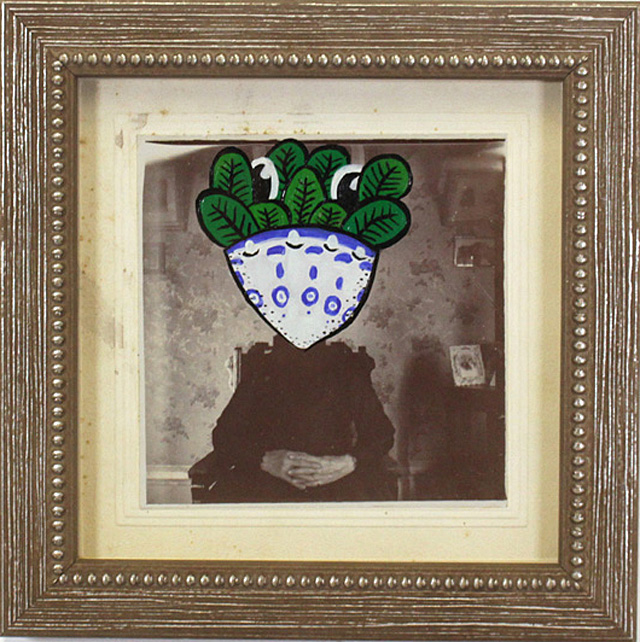
Are there any particular cultures that have influenced your aesthetics?
I‘ve been inspired by the time I spent in India – particularly the beautiful colors I associate with its culture.
Do you work with a sketch in hand or do you just let it flow?
I let it flow. If I don’t like it, I can always do it again.
Are you generally satisfied with your work?
No! I’m very critical.
What do you think of the role of the Internet in all of this?
It’s a great tool for me to connect with other artists and with clients.
Do you have a formal arts education?
No! I’m self-taught. My friends were my best teachers.

What percentage of your time is devoted to art?
All of it. I live my life through my art. I’ve always been drawing.
And is it the main source of your income?
Yes, most of the money I earn is through my artwork.
What is the riskiest thing you’ve done?
I was painting in India – balancing on a wobbly two-story ladder — when a giant bull was about to rub against it.
That certainly does sound menacing! How would you describe your ideal working environment?
Painting outside with friends. I love meeting and talking to people.
How has your work evolved through the years?
It’s become more refined.
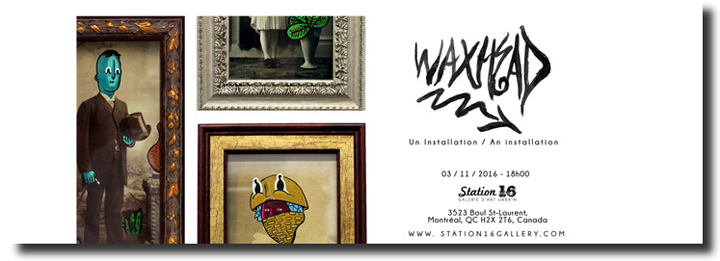
What do you see as the role of the artist in society?
As far as the street artist — it is to connect people to one another through what they see on the streets. I especially want to connect to the youth in this city.
What about the photographers in this scene? And the bloggers? How do you feel about them?
We need them! What we do needs to be archived.
I certainly agree with that!
Note: Waxhead: An Installation — a collection of Waxhead’s hand-embellished vintage photos — opens this Thursday, November 3 at 6pm at Station 16 and continues through November 14.
Interview by Lois Stavsky
Photos: 1, 2 & 4 Lois Stavsky; 3 courtesy Station 16
